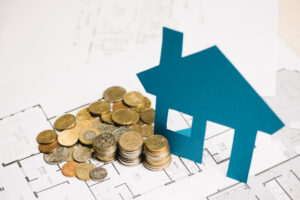
The traditional American dream of homeownership, once considered an achievable milestone for the middle class, is facing significant challenges in today’s real estate landscape. With soaring property prices and mortgage rates at historical highs, many first-time buyers find themselves priced out of the market. Moreover, existing homeowners are encountering obstacles when attempting to sell and move to new homes.
In light of these difficulties, a pressing question emerges: Is homeownership still within reach for the middle class, or has it become an exclusive privilege reserved for the affluent?
Ali Wolf, chief economist at Zonda, a prominent building consultancy, reflects on this issue, noting the evolving dynamics of homeownership attainment. “In the past, homeownership was often seen as a natural progression for middle-class individuals,” she observes. “However, in today’s landscape, achieving this dream is significantly more challenging. It often requires substantial wealth or a stroke of luck.”
In 2022, the median household income stood at $74,580, as reported by the U.S. Census Bureau. However, this income level may fall short when faced with the daunting reality of home prices. According to recent data from Realtor.com®, the median list price for homes reached $410,000 in December of the same year. (It’s important to note that households encompass various living arrangements, including singles, couples, families, and roommates.)
Traditionally, financial advisors recommend that buyers allocate no more than 28% of their pre-tax income to housing expenses. This encompasses mortgage principal, interest, property taxes, and home insurance. Based on this guideline, the average U.S. household, with a 10% down payment and minimal debt, could afford a home priced at $270,000.
However, this figure falls significantly short, approximately 34%, of the typical home cost.
“It’s a challenging landscape,” acknowledges Danielle Hale, Chief Economist at Realtor.com. “While affordability today isn’t at its worst, it certainly isn’t much better.”
Yet, it’s important to contextualize current mortgage rates. Although hovering around the mid-6% mark, these rates appear high compared to the recent past, when buyers enjoyed loans in the 2% to 3% range. However, they remain lower than the rates prevalent during much of the 1990s, fluctuating from the mid-6% range to over 10%, as per data from Freddie Mac.
For perspective, consider October 1981, when rates peaked at a staggering mid-18%.
Nevertheless, while mortgage rates have fluctuated, home prices have seen a steep ascent. In October 1981, the median cost of an existing home was a mere $66,000, as reported by the National Association of Realtors®. Fast forward to today, and home prices have skyrocketed by nearly 500%. Conversely, median household income has only risen by approximately 300% during the same period, according to U.S. Census Bureau data.
“The average family in today’s market is unable to afford the average home,” asserts Yelena Maleyev, a senior economist at KPMG. “Achieving affordability will require a combination of lower mortgage rates, reduced home prices, and increased housing supply.”
Empowering Middle-Class Homebuyers: Essential Strategies for Success
Navigating the Homebuying Maze: Factors Shaping Middle-Class Success
The dream of homeownership is a journey filled with twists and turns, especially for middle-class buyers. Success in this endeavor hinges on a variety of factors, including geographic location, financial stability, and the potential support from family members.
Take, for example, the stark contrast between purchasing a home in San Francisco versus Detroit. In the former, where the median list price soared to $1.2 million in December, securing a property poses a formidable challenge compared to the latter, where the median price sits at a modest $85,000.
Moreover, the financial circumstances of prospective buyers play a crucial role. A middle-class couple with substantial incomes, minimal debt, and assistance from relatives may find themselves able to afford a one-bedroom condo in a more affordable Midwestern urban area. Conversely, a larger family grappling with significant debt obligations, childcare expenses, and the need for a spacious dwelling in a high-cost region may encounter hurdles in securing mortgage approval.
Jacob Channel, a senior economist at LendingTree, underscores the nuanced nature of homeownership prospects: “The feasibility of purchasing a home depends on various factors such as housing requirements, existing debt levels, and family dynamics. While opportunities exist for many, they may not be universally accessible.”
The Unique Challenges Facing First-Time Homebuyers
Navigating the Housing Market as a First-Time Buyer: Challenges and Strategies
For those venturing into the realm of homeownership for the first time, the current landscape presents significant hurdles. Rising home prices and mortgage rates have created formidable barriers, particularly for individuals lacking the equity of prior property ownership. This demographic often skews younger, facing the dual challenges of lower earning potential in early career stages and the burden of existing financial obligations, such as student loans and car payments.
The confluence of these factors results in diminished purchasing power and heightened competition, with first-time buyers frequently contending against cash offers from investors and homeowners leveraging profits from expensive locales to buy in more affordable regions.
Successful entry into homeownership typically correlates with higher incomes. Recent data from the National Association of Realtors (NAR) indicates that first-time buyers boasting a median household income of $95,900 experienced a notable 35% increase compared to the previous year.
However, for those without substantial incomes, familial financial support has emerged as a lifeline. Many prospective buyers have turned to inheritances, with parental assistance providing crucial funds for down payments and closing costs.
“In a market where purchases are largely income-driven, securing a home can prove exceedingly challenging,” observes Ali Wolf, chief economist at Zonda. “Transitioning from renting to owning presents formidable obstacles.”
Feeling Trapped: The Dilemma of Homeowners in Today’s Market
Trapped in Ultralow Rates: The Struggle of Middle-Class Homeowners in Today’s Market
As the housing market tightens its grip, even middle-class homeowners find themselves ensnared in the challenges. Many have been fortunate to secure mortgages at ultralow rates, some dipping below 3%. However, contemplating a sale to upgrade to a new property with a mortgage means grappling with soaring prices and interest rates. Consequently, they face the daunting prospect of significantly larger monthly mortgage obligations, a predicament that has effectively pinned them in homes that may no longer suit their needs.
Trading up isn’t impossible, but it often demands meticulous planning or major life adjustments. Homeowners benefiting from low-rate mortgages might strategize to set aside funds for their next home purchase. Alternatively, advancements in careers, such as promotions or transitioning to higher-paying jobs, or transitioning to a dual-income household, can provide financial flexibility. Additionally, long-standing homeowners frequently accumulate substantial equity over time, which could be utilized to facilitate their next purchase, particularly if they are considering downsizing or relocating from a costly locale to a more budget-friendly one.
“The silver lining amid these challenges is that homeowners currently boast record levels of equity in their homes,” remarks Lisa Sturtevant, chief economist of Bright MLS, covering the mid-Atlantic region. “However, the reluctance to navigate higher mortgage rates poses a significant hurdle for many.”
Feeling Trapped: The Dilemma of Homeowners in Today’s Market
Delaying homeownership, a traditional pathway to wealth for many Americans, could have significant financial implications. By postponing the purchase of a home, individuals may miss out on the opportunity to accumulate wealth and secure their financial future.
According to Danielle Hale, Chief Economist at Realtor.com, the longer individuals wait to enter the housing market due to affordability challenges, the longer it will take for them to build equity and wealth. This delay could impact their ability to save for retirement, cover college tuition for their children, or handle unforeseen financial emergencies effectively.
However, there is some positive news for potential buyers. Mortgage rates have decreased since reaching a peak in the fall, offering a more favorable borrowing environment. Additionally, builders are focusing on increasing the construction of smaller, more affordable homes, which could help mitigate rising housing costs and provide more options for prospective buyers.



